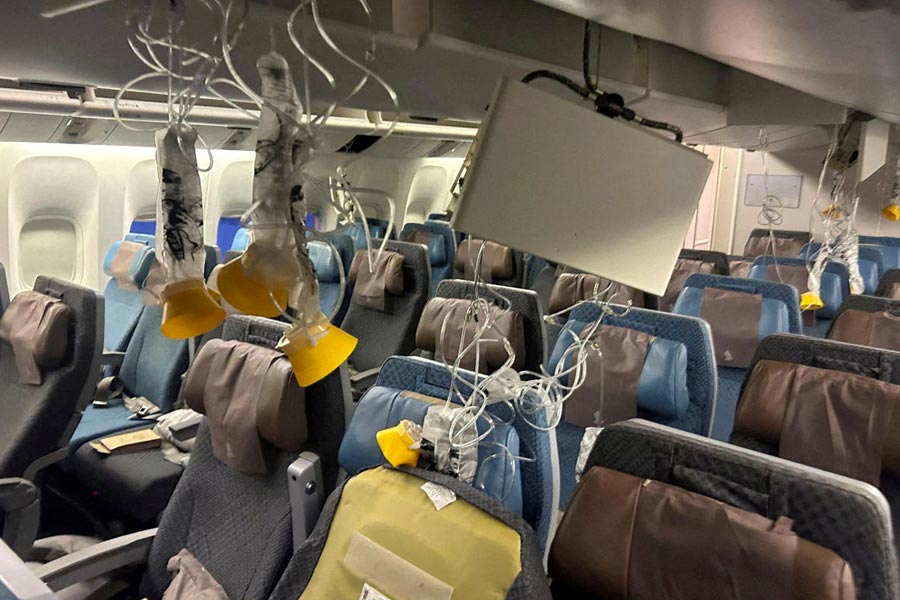Some frequent fliers have described Singapore Airlines (SIA) in-flight service protocol following the recent severe turbulence on its plane as a hasty move which is already having repercussions on its service offerings and driving up stress levels of cabin crew, a media report said on Thursday.
However, the overall requirement of suspending meal service and “cabin crew members must buckle up when the seat-belt sign is turned on”, has had a ripple effect on passengers and crew, The Straits Times reported.
SIA put more comprehensive safety measures in place shortly after Flight SQ321 from London to Singapore experienced severe turbulence on May 21, leaving a passenger dead and dozens injured.
Previously, only hot drinks and soup were not allowed to be served when the seatbelt sign was turned on and service could continue at the discretion of the crew, but meal service must now be completely paused.
Flights inbound (towards Singapore) from Europe pass over a patch of the Andaman Sea known for turbulence, according to The Straits Times, which cited reactions from crew members and passengers.
The Andaman Sea, a part of the Indian Ocean, is located west of Thailand.
One flight attendant said there was more than an hour of turbulence during her recent three-and-a-half-hour flight flying a Singapore-India route. The cabin crew had to carry out meal service with the little remaining time.
“Some passengers don’t understand why the service policy change is important, and rate service as average to poor via the customer feedback channel after flights where service was affected by turbulence,” the broadsheet quoted her as saying.
“We’re stressed and fatigued, but at the moment there’s nothing we can do except continue to navigate our work under the given circumstances.” A flight steward said crew members have had to make adjustments “by doing things like removing after-take-off drinks to manage the time we have for meal service”.
He noted: “Passenger reactions vary -- some are very understanding, while others feel short-changed.” During pre-flight briefings he has attended since the incident, in-flight managers have been actively checking upon crew members’ well-being, the flight steward said, adding that a counselling team had been formed to support cabin crew.
Another crew member said: “While it might be more stressful as meal service may be affected, I think the crew will try to provide the same service standards safely.” “We can’t fight Mother Nature,” said an SIA crew member who has been flying for more than a decade, adding that safety remains the crew’s top priority.
John Tan, lead professional officer teaching in the air transport management degree programme at the Singapore Institute of Technology, said the policy change “highlights the importance of adaptability in aviation safety”.
“Prompt responses are necessary to protect passengers and crew effectively. Enacting policy changes in response to incidents fosters a culture of continuous safety improvement," the Singapore daily quoted Tan as saying.
But the task of balancing safety and service quality may present a challenge for SIA, added Tan.
“The objective is to reduce the time cabin crew have to spend on the aisles. For SIA, this could translate into retraining cabin crew to increase their efficiency or changing the way services are delivered without compromising service quality. And the option to restructure the cabin layout remains a possibility,” he said.
Still, Shukor Yusof, founder of aviation consultancy Endau Analytics, believes that SIA’s service quality will not be affected by the new protocol.
“The decision was arrived at after careful consideration and the urgent need to, first and foremost, prevent nasty injuries for passengers and crew in the future,” he was quoted as saying.
The Singapore daily also had some netizens suggesting that passengers should take along their food and drinks on board in case meal service was canned due to turbulence, especially on short- and medium-haul flights.
Except for the headline, this story has not been edited by The Telegraph Online staff and has been published from a syndicated feed.











